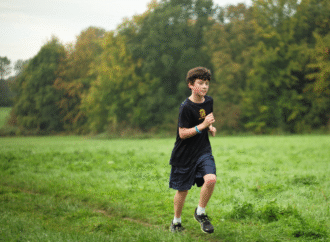Scolianormative (adj.): The assumption that behaviors defined by institutionalized schooling are “normal.” An assumption that became pervasive in industrialized societies in which institutionalized schooling became the norm that resulted in marginalizing and harming millions of children. Once society began to question scolianormativity, gradually people began to realize that the norms set by institutionalized schooling were perfectly arbitrary. It turned out that it was not necessary to harm children. The institutions that led to such widespread harms were dismantled, and humanity transcended the terrible century of institutionalized schooling.
The conventional educational model, government-enforced and subsidized, is based on 13 years of schooling consisting of state-defined curriculum standards and exams leading to a high school diploma.
Young human beings are judged as either “normal” or not based on the extent to which they are “on track” with respect to grade level exams and test scores. Students who are not making the expected progress may be diagnosed with learning differences (formerly known as disabilities). Students who can’t sit still adequately may be diagnosed with ADD/ADHD. Students who find the experience soul-killing may be diagnosed with depression or anxiety. Students who can’t stand to be told what to do all day may be diagnosed with Oppositional Defiant Disorder (ODD). Students who score higher on certain tests are labeled “gifted.”
Massive amounts of research and institutional authority have been invested in these and other diagnoses. When a child is not progressing appropriately in the system, the child is often sent to specialists who then perform the diagnosis. When appropriate, then the child is given some combination of medication, accommodations, and/or sent to a special program for children with “special needs.”
Many well-intentioned people regard this system as life-saving for the children who might otherwise have “not had their needs met” in the absence of such a diagnosis and intervention. And this is no doubt often true, but our fixation on scolianormativity blinds us to the fact that an entirely different perspective might actually result in better lives for more children.
How could one possibly deny mountains of evidence on behalf of such a life-saving system?
Scolianormativity
The Prussian school model, a state-led model devoted to nationalism, is only about two hundred years old. For much of its first century it was limited to a few hours per day, for a few months per year, for a few years of schooling. It has only gradually grown to encompass most of a child’s waking hours for nine months a year from ages 5 to 18. Indeed, in the U.S., it was only in the 1950s that a majority of children graduated from high school (though laws requiring compulsory attendance through age 16 had been passed in the late 19th and early 20th century). In addition, for most of its first century, it was far more flexible than it has become in its second. The increasing standardization and bureaucratization of childhood is a remarkably recent phenomenon in historical terms.
In his book Seeing Like a State, the political scientist James C. Scott documents how governments work to create societies that are “legible,” that can be perceived and managed by the state to suit the needs of the state’s bureaucrats and political leaders. Public schools are one of the most pervasive of all state institutions. The structure of public schooling has grown to suit the needs of the state bureaucrats who monitor it.
Stanford scholar David Tyack has described this structure as “the grammar of schooling,” the notion that schooling consists of core subjects (math, science, social studies, and language arts) with grade level curricula (K, grades 1, 2, etc.) with annual assessments including grades and test scores. School districts purchase textbooks for “4th grade math” or “8th grade social studies,” they report enrollment by grade level to the state, test scores are reported by grade level, etc. The bureaucracy attempts to make every child “legible” to the state in a fairly one-dimensional manner.
Both “special education” for students who were slower and also “gifted” education were categories created by the state in the 1960s because the previous categories were not adequate to address the needs of all. But note that both are defined based on the notion that the “normal” child is one who is progressing at the rate defined by the state.
What Are the Limits to This Model?
Caleb Cappoccia’s mother pulled him out of school in 3rd grade because he was vomiting at the thought of going to school. He was homeschooled, became a child actor after 100 auditions, and was ultimately cast in the AMC series The Son alongside Pierce Brosnan. He later went to two years at Austin Community College, then was admitted to Harvard. His mother faced significant stigma at the time for pulling him out of school. Both she and he are glad she did. Who knows what diagnoses and treatments he missed by leaving school?
Mikkel Thorup was diagnosed with dyslexia, sent to a specialized school for children with learning differences, and hated it so much that he left in middle school. He loved to travel and listened to hundreds of books each year, and has now created an expat relocation business that brings in seven figures per year. Both school itself and the diagnoses did nothing for him but bring him misery.
A decade ago I had a student who was scoring in the bottom 10 percent on cognitive tests. In her public school, she considered killing herself with a knife every morning as she passed through the kitchen because she felt stupid. She was in a wealthy school district with abundant resources, her family paid for the best therapists and psychiatrists, and she was still suicidal. When she came to me, I let her focus on her strengths (she produced brilliant stop-motion animations) and dropped any expectation that she would do any math. She recovered her confidence, re-engaged in academics later, and is now at a top-ranked liberal arts college.
Another student who had been kicked out of several private schools for Oppositional Defiant Disorder went on to become one of the best teen entrepreneurs I’ve worked with. A student who refused to go to school for three years is now at a top liberal arts college, another later became a self-taught world-class software developer working for Tesla and SpaceX. One young woman was on medications for depression until I told her she didn’t need to go to school in order to get into college. She quit school and became well within a few weeks without medications.
These and hundreds of other stories along these lines have led me to regard the system as pathological rather than the children. This is not to cast doubt on the technical aptitude of the countless psychologists and educational researchers who have spent lifetimes building the edifice of diagnoses and treatments.
But at the same time, as Carol Black notes regarding the standards movement culminating in No Child Left Behind (NCLB),
. . . the available ‘data’ that drives it (NCLB) is not, as a matter of fact, the ‘science of how people learn.’ It is the ‘science of what happens to people in schools.’”
This is when it occurred to me: people today do not even know what children are actually like. They only know what children are like in schools.
She quips that studying the behavior of children at school is like studying the behavior of orcas at SeaWorld.
Imagine if for the past hundred years we had spent tens of billions of dollars for hundreds of thousands of scholars to study the behavior of orcas at SeaWorld using the most rigorous research, then built entire systems of diagnoses and treatment for them in an earnest attempt to ensure that those orcas who did not do as well in the environment at SeaWorld were “treated properly.” Orca geneticists would show rigorous evidence that biting walls in captivity was inheritable: Some genetic lineages of orcas were more prone to such behavior. “Medications” and elaborate treatments would be designed to reduce the extent to which those genetically predisposed orcas bit the walls of their cages. “Normal” orcas would be those which did not.
We have created institutions, diagnoses, and treatments for children all built on the needs of the state for legibility rather than on the needs of children to flourish. In recent decades, millions of parents have focused more on the well-being of their children than on the needs of state bureaucracies by leaving schooling behind. As we end the government monopoly on schooling, through homeschooling, microschools, learning pods, self-directed learning, and a thousand other options, let’s also end scolianormativity, the notion that any government-mandated standards premised on schooling in any sense defines a child and the path that is best for them.
—
This article appeared first on FEE.org under a Creative Commons (CC BY 4.0) license.
Image credit: Pexels
3 comments















3 Comments
Tom
December 12, 2024, 5:16 pmInteresting, this may lead to a better understanding of children.
REPLYA book I read years ago was ‘Summerhill, A Radical Approach to Child Rearing by A. S. Neil, with forward by Erich Fromm.
The book spoke of similar issues with children and education. Thank you for the good article. Tom
Cathryn
December 13, 2024, 7:14 pmHas someone compared this contemporary situation with the typically rigorous American education of a century ago?
REPLYCarrie Alfred
June 22, 2025, 9:55 amMy husband left me for another woman a few months ago and ever since then my life has been filled with pain and agony because my husband was my first love whom I have spent my entire life with. A friend and also a colleague from work told me he saw some testimonies of a spiritualist called Doctor Muna, he can bring back lover within some few days, Ridiculously, I laughed it out and said I am not interested but for the sake of friendship, she consulted this God sent man on my behalf and to my greatest surprise after 12 hours my husband called me for the very first time for over 7 months saying "I miss you babe and I'm so sorry for everything I made you went through" I couldn't say a word but cried over the phone and hanged up. We are back together and living Happily together again. To be honest, I still can’t believe it, because it’s highly unbelievable. Thank you DOCTOR MUNA for bringing back my love and also to my SELFLESS FRIEND. Laura, who interceded on my behalf. For anyone who might need help of this wonderful spiritualist here is the email address: [email protected], Also add him on WhatsApp: +2347035449257
REPLY